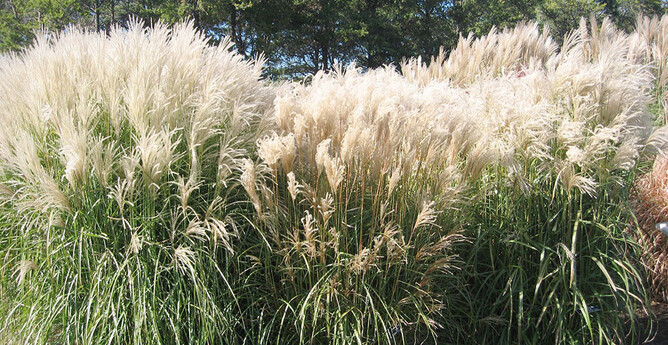The genus Miscanthus includes approximately 20 species. The name comes from the Greek mischos meaning “stalk” and anthos, “flowers.” Grasses in this genus are called Maiden Grass, Chinese Silver Grass, Japanese Silver Grass, Susuki Grass, or Eulalia Grass.
Miscanthus is native to Asia. It is found in China, Japan, Taiwan, and Korea in meadows, marshes, hillsides, and abandoned areas, near active volcanoes, in poor soil and on mountainsides up to 1500 metres. It is a dominant species in Japan’s grasslands. Known as Susuki Grass, its blooms are considered a sign of autumn. Cattle use it for fodder and it is a main component of thatched roofs. Children make play toys out of the fluffy blooms, and its fibers are made into paper.
Miscanthus x giganteus is a sterile hybrid reaching heights of 3.5 – 4.0 metres each season, once it is established. It is believed to be a hybrid of Miscanthus sinensis, native to China, and M. sacchariflorus, native to Japan. In Spring, fluffy, fan-like plumes emerge and as Winter approaches the foliage turns from green to a deep burnt orange which fades to tan.
The Miscanthus being grown and used in New Zealand is a sterile, naturally occurring hybrid of two Miscanthus species whose ranges overlap in Japan. We have two clones in New Zealand – one that was obtained from the USA and one that was obtained from the UK – and both seem to be very suitable to New Zealand conditions.


